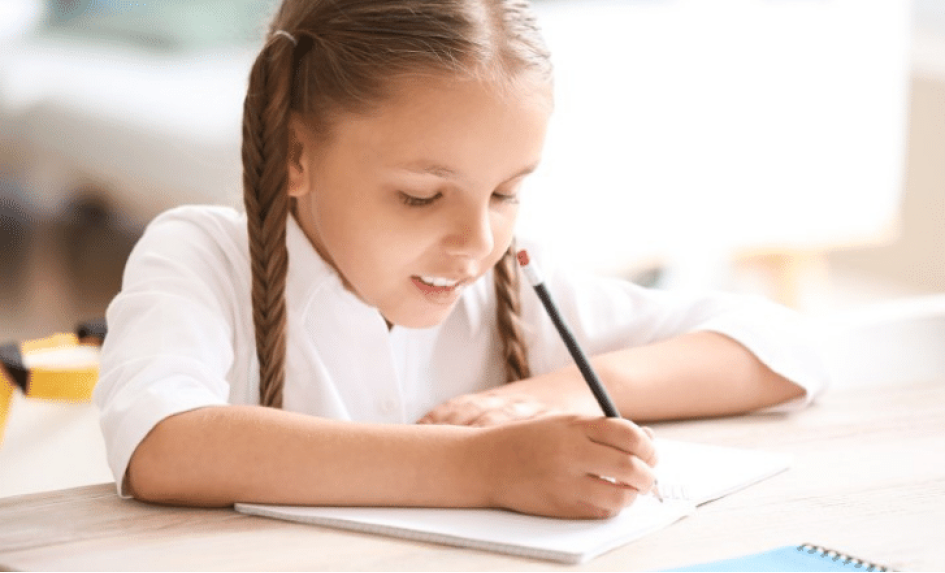The DfE’s July 2025 writing framework offers schools an opportunity to review and rethink their approach to the subject.
However, focusing on ‘nuts and bolts’ skills, shouldn’t come at the expense of ensuring children actually enjoy writing. Indeed, developing a culture of writing for pleasure in schools is fundamental to producing skilled writers.
In my view, the way to get children writing is to make it an enjoyable pursuit rather than a daunting task. Fortunately, there are plenty of ways to make writing fun while helping to turn pupils into confident, skilled and happy writers.
Show pupils a wide range of writing
Enthusiastic readers make good writers, but some children don’t consider themselves readers unless they get through a lot of books. However, even the most reluctant story reader reads cooking recipes, comics or instructions for a game.
Similarly, children are doing more writing than they realise. Try asking pupils to make a list of all the writing they have done in the last 24 hours. They may be surprised by the result. Many pupils will have sent messages, typed website addresses or entered terms into a search engine.
It’s important to show children examples of effective writing in various formats. These can range from press articles to play scripts, song lyrics to blogs. Children need to experience a breadth of texts including those which are digital and visual.
Showing children some authentic, published writing across different platforms helps them understand how writers engage their audiences. It can also inspire pupils to develop their own creative ideas.
Give purpose to pupils’ writing
Children will be much more motivated to write if they have a good understanding of why they are writing and who they are writing for. They will also get to see how their style of writing needs to be tailored to different audiences. Tasks with a genuine purpose and audience ignite pupils’ interest and encourage them to form coherent arguments to back up a point.
When children are given a controversial writing task, they can express their feelings while writing for a range of audiences. For example, ask the children to imagine that the school playground is due to be sold off to a company which plans to build affordable housing. Encourage pupils to express their views in a formal letter to the local authority, a newspaper report and an email to a relative.
Activities with a purpose help children get used to writing content which is relevant and appropriate to their readers.
Use objects to generate themes
Using objects as the basis of a writing task is a tried and tested approach, and showing children a fir cone or a conker can yield some great descriptive writing.
However, there are many other ways of using objects for writing activities. Instead of describing the conker, ask the children to write about the tree it came from or the animals that live in the forest where it grows.
A broken piece of jewellery could inspire pupils to reflect on the history or origin of the object. Ask pupils to think about who may have owned it or made it and why and how it was broken. An old photograph or diary might provide a powerful start to a story or a theme for a poem.
Some children prefer to write non-fiction texts and they should have that option wherever possible. If you have brought in some shells and seaweed to show the children, suggest they write a section of a travel brochure or a persuasive leaflet about keeping our beaches clean and litter-free.
Creative challenges to initiate writing for pleasure
Setting writing challenges can be inspiring, motivating and help those creative juices to flow in children who might otherwise not be so turned on to writing as others. They can help to level the playing field too, between better and less able writers.
Here are a few ideas for how to initiate writing exercises which help to boost vocabulary, practise spelling and, for younger children, support the learning of the alphabet.
- Write ten sentences starting with ‘I wish…..’
- Write a short text without using any words containing the letter ‘a’.
- Create an A to Z of animals or places.
- Invent a word and give an imaginative explanation of its meaning.
- Write down all the colours you have worn this week.
Give pupils a topic to debate
Debating is an important skill, and giving children subjects to debate can help them articulate their thoughts in writing. Topics which they have strong views on will work best.
You could try providing pupils with some opinions then seeing how many children agree or disagree. Good examples are ‘dogs are better than cats’, ‘football is a better game than cricket’ or ‘diving in the sea is more exciting than climbing a mountain.’
Alternatively, give your pupils a thought-provoking statement and ask them to write a persuasive newspaper article to argue the theme. Ideas which work well include ‘there should be no homework at school’, ‘global warming is the world’s biggest problem,’ or ‘the Queen is the most important person in the world.’
When children see writing as a creative and enjoyable activity and understand the importance of crafting a good message, presenting a persuasive argument or producing an exciting story, they are much more likely to find joy in writing.
Having been encouraged to explore their own authentic voice in their creative writing, children will be more engaged in other areas of the curriculum while building writing skills which will last a lifetime.
Writing for pleasure: Ignite the spark
- Ask pupils to write a list. It could be a list of vegetables, spiky things, orange things, happy words or countries. This is a great starter activity to get children writing.
- Challenge the children to write all they can about chocolate in one minute. Or try snow, giraffes, trains or weekends. A short boost of focused writing can channel creativity.
- Provide pupils with a list of words – spicy, dismal, joy, parcel, cheese, heavy – and ask them to come up with the funniest sentences they can from them.
- Give the pupils a slip of paper and ask them to write a topic on each one. Put all the slips of paper in a jar, take one out and ask the children to write all they know about that topic.
- Create “story jars” – one each for location, character and the weather - and add word prompts to each. Ask children to pull a word out of the jars and write a story. So, for example, a pupil might compile a tale about a dog-walker, in the park, during a thunderstorm.
Kathy Ewers is education advisor at Juniper Education.










